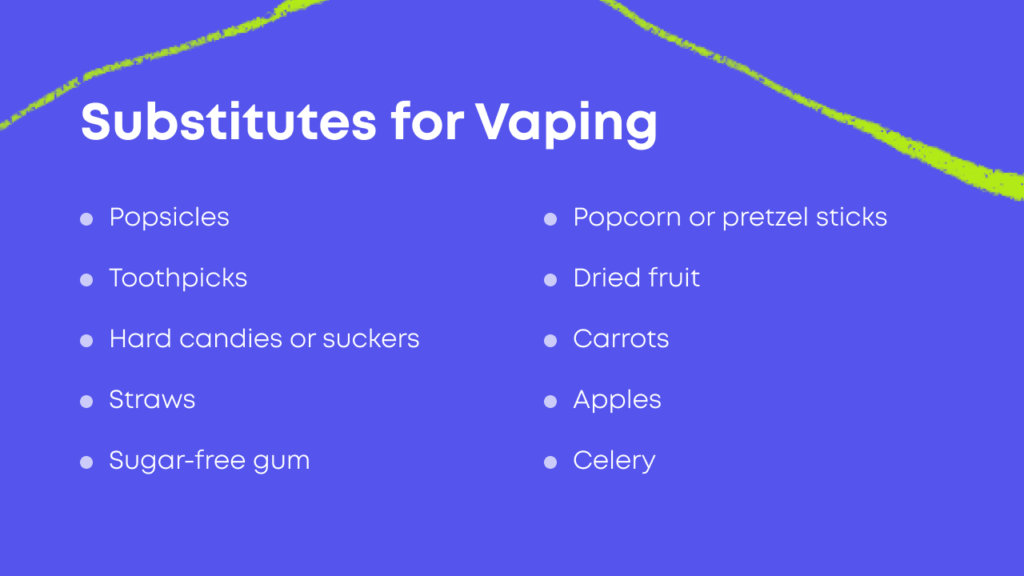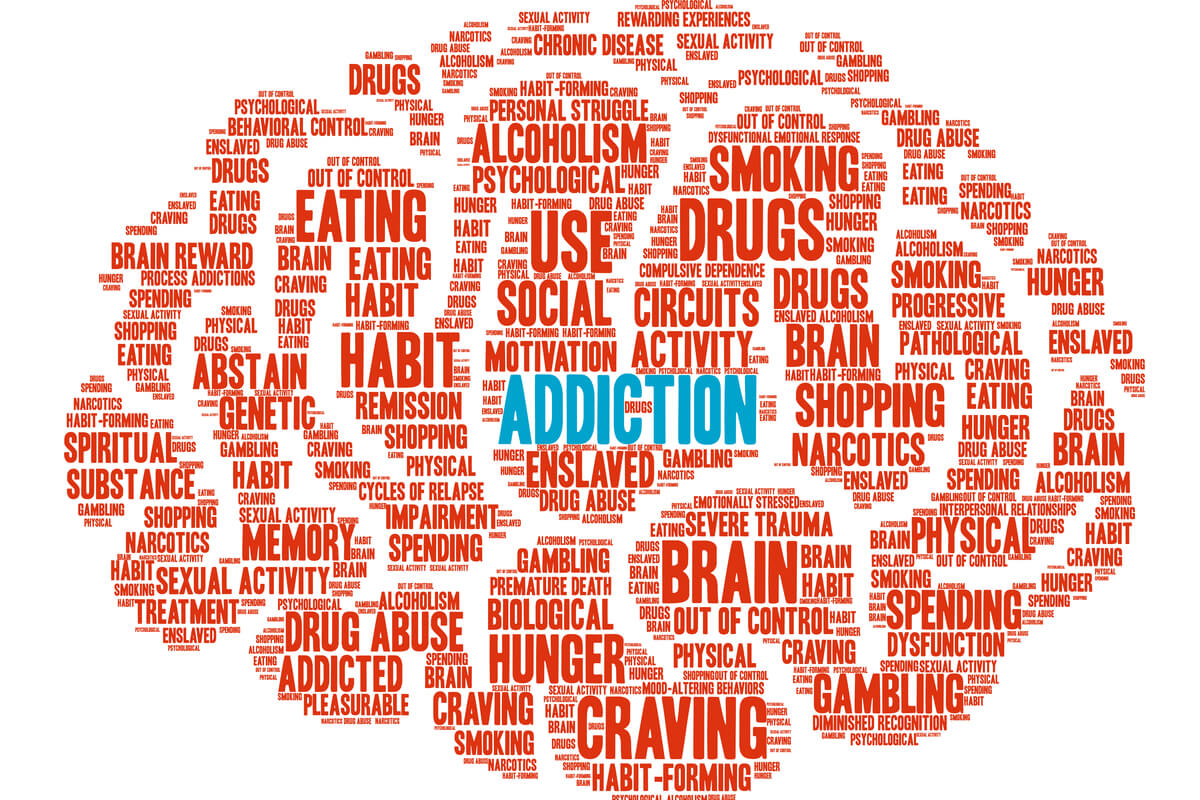To quit vaping for good, you need a solid plan in place and support from others.
Vaping, or smoking e-cigarettes, can be highly addictive. Nearly all vapes, or e-cigarettes, in the United States contain nicotine. [1]
Nicotine is a highly addictive substance that can cause withdrawal symptoms and intense cravings when trying to quit. Some people are able to quit very easily while for others, it can be a process that takes months, years, or even be a lifelong challenge.
It is helpful to have a plan in place on how to quit successfully as well as to understand what to expect during the process. You can quit vaping for good with the right tools in place.
How to Quit Vaping for Good: The Step-by-Step Process
The first step in quitting vaping is making the decision to quit. Once you have decided that it is time to quit, you can take the steps needed to ensure that you will not only stop vaping, but not return back to it or give into the cravings.
After firmly deciding to quit, follow these steps:
1. Make a plan.
The first step is to come up with a comprehensive plan on how and why you want to quit. This can include writing a list of your “why” as well as setting a specific quit date.
There is always going to be a reason to push out quitting, but setting a date and holding yourself accountable can set you up for success.
2. Ask for help.
Quitting vaping can be easier with people in your corner supporting you. This can include family and friends, peer support, groups, therapists or counselors. Ideally, you can utilize a combination of personal family and friends and some kind of professional team.
The right support system can be key for keeping you accountable and maintaining your mental health through quitting.
3. Consider weaning off nicotine.
Nicotine is an addictive substance. While withdrawal symptoms are not dangerous or life-threatening when you stop vaping “cold turkey”, they can be uncomfortable both physically and mentally.
It can be beneficial to switch to a nicotine replacement product or use prescription medications from your doctor to help you quit. These tools can help manage withdrawal side effects and cravings.
4. Set your environment for success.
Remove temptations and all e-cigarette paraphernalia from all sources. Empty all vapes from your drawers, backpack, purse, pockets, and car. Tell your friends and family members that you are quitting, so they can support you and hold you accountable. It may also be helpful to avoid contact with the places or people that you are used to smoking around, at least at first.
5. Use distractions, stress solutions, and substitutions.
Exercise to release happy brain chemicals and keep your mind busy to manage cravings. Breathing exercises, meditation, and yoga can all help to calm the mind and manage stress. Use fidget devices to keep your hands busy and consider snacks that have similar flavors to your vapes to calm these cravings.
Substitutes for vaping can include the following:
- Popsicles
- Toothpicks
- Hard candies
- Straws
- Sugar-free gum
- Suckers
- Pretzel sticks
- Popcorn
- Dried fruit
- Carrots
- Apples
- Celery

6. Celebrate each success.
Rewarding yourself for staying smoke-free can help to increase happy thoughts, enhance self-confidence, mitigate cravings, and relieve stress.
Tips for Quitting Vaping
When following your plan for quitting vaping, it is important to work through managing your cravings, withdrawal symptoms, and stress. Remember that withdrawal will pass, and cravings will diminish with time.
Even just one vape can be a setback you don’t need. It does get easier with time, so the longer you can go without vaping, the closer you will be to being smoke-free.
Here are some tips for quitting vaping:
- Use your support system. Lean on family and friends when you are experiencing cravings or use one of the professional or peer resources to help the moment pass.
- Exercise regularly. Healthy physical activity helps to diminish cravings and can help you feel good without vaping.
- Use distractions. Do something to engage your mind when a craving strikes. This can focus your attention elsewhere while it passes.
- Eat healthy. It is common to gain weight after quitting vaping. While you should not worry too much about this in the beginning, it can be helpful to stick to a nutritious diet to minimize weight gain and help you feel better overall.
- Use stress-relieving methods. Breathing exercises, mindfulness exercises, acupuncture, yoga, and healthy coping mechanisms for dealing with stress can help you to better manage cravings.
- Avoid people, places, or things that remind you of vaping. It can be helpful to stay away from anything that will induce a craving, especially in the early stages of quitting.
Timeline of Nicotine Withdrawal
Withdrawal symptoms from nicotine can start within the first several hours to the first day after your last vape. They generally peak around day three, but some of the emotional side effects can continue for a few weeks to months.[2]
It is important to remember that nicotine withdrawal is not dangerous or life threatening. Symptoms will fade with time as long as you do not vape again.[3]
The timeline can look different for each person, such as how long you vaped and how often. The general timeline for nicotine withdrawal can look like this:
- Within the first 24 hours: Cravings, anxiety, agitation, frustration, anger, and a general grouchy feeling are common the first day after stopping vaping.
- Week 1: Trouble focusing and concentrating, sleep issues, feeling restless and jumpy, increased hunger, and mood changes, including depression, can occur in the first few days after stopping vaping.
- Month 1: Typically, after the first week or so, withdrawal symptoms begin to wane and start to improve. Cravings, mood swings, and sleep difficulties can continue, however.
- Month 2 and beyond: Withdrawal symptoms generally start to improve after the first few weeks, but some difficulties regulating moods and sleep issues can continue for a few months in some people.
Resources for Quitting Vaping
There are many resources available to help you quit vaping and stay smoke-free, which include the following:
- This is Quitting: This is a free anonymous texting program to help young people quit vaping.[4]
- National Texting Portal: This service offers mobile text-based support to help adults stop smoking.[5]
- quitSTART App: This is a smartphone app aimed at helping you quit smoking.[6]
- Quitline: This resource offers free phone support to stop smoking.[7]

Medically Reviewed By Elena Hill, MD, MPH
Elena Hill, MD; MPH received her MD and Masters of Public Health degrees at Tufts Medical School and completed her family medicine residency at Boston Medical Center. She is currently an attending physician at Bronxcare Health Systems in the Bronx, NY where ... Read More
- Quick Facts on the Risks of E-Cigarettes for Kids, Teens, and Young Adults. Centers for Disease Control and Prevention. https://www.cdc.gov/tobacco/basic_information/e-cigarettes/Quick-Facts-on-the-Risks-of-E-cigarettes-for-Kids-Teens-and-Young-Adults.html?s_cid=OSH_emg_GL0004&gclid=CjwKCAjwsMGYBhAEEiwAGUXJaZfAtmcO1bbkKQlgCkYl_3lDKpDojwtscTNhHsW7upzM0g4u0zBc_xoC79IQAvD_BwE#why-is-nicotine-unsafe. June 2022. Accessed September 2022.
- Handling Nicotine Withdrawal and Triggers When You Decide to Quit Tobacco. National Cancer Institute. https://www.cancer.gov/about-cancer/causes-prevention/risk/tobacco/withdrawal-fact-sheet. January 2022. Accessed September 2022.
- 7 Common Withdrawal Symptoms. Centers for Disease Control and Prevention (CDC). https://www.cdc.gov/tobacco/campaign/tips/quit-smoking/7-common-withdrawal-symptoms/index.html. June 2021. Accessed September 2022.
- This is Quitting. Truth Initiative. https://truthinitiative.org/thisisquitting. 2022. Accessed September 2022.
- National Texting Portal. Centers for Disease Control and Prevention. https://www.cdc.gov/tobacco/campaign/tips/quit-smoking/national-texting-portal.html. February 2022. Accessed September 2022.
- quitSTART App. Centers for Disease Control and Prevention. https://www.cdc.gov/tobacco/campaign/tips/quit-smoking/quitstart-app/index.html. February 2022. Accessed September 2022.
- Five Reasons Why Calling a Quitline can be Your Key to Success. Centers for Disease Control and Prevention. https://www.cdc.gov/tobacco/campaign/tips/quit-smoking/quitline/index.html. January 2022. Accessed September 2022.
Download Our Free Program Guide
Learn about our program, its effectiveness and what to expect
Related articles
Imagine what’s possible on the other side of opioid use disorder.
Our science-backed approach boasts 95% of patients reporting no withdrawal symptoms at 7 days. We can help you achieve easier days and a happier future.









